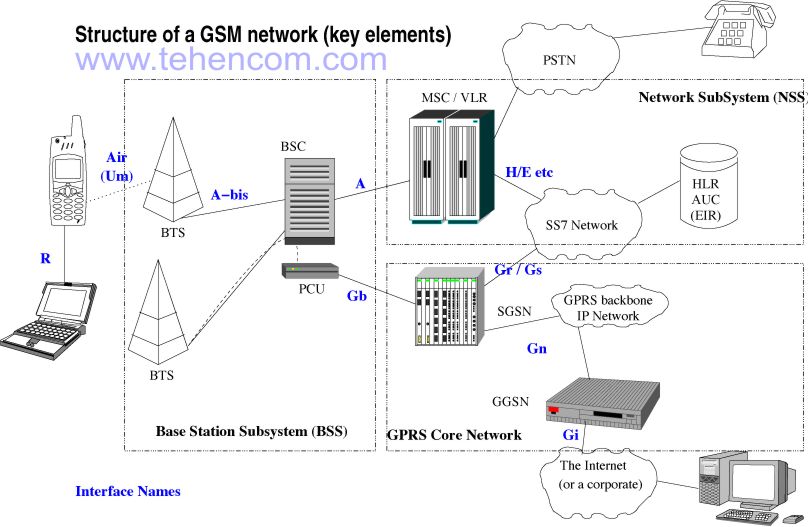GSM testing – description of the standard, measuring instruments
Standard GSM (from the name of the Groupe Special Mobile group, later renamed Global System for Mobile Communications) (Russian SPS-900) – a global digital standard for second-generation mobile cellular communications, with channel separation according to the TDMA principle and a high degree of security due to public key encryption. Developed under the auspices of the European Telecommunication Standards Institute (ETSI) in the late 80s.
Description of the GSM standard
The GSM standard is digital and provides high quality and confidentiality of communications and provides subscribers with a wide range of services: automatic roaming, data reception / transmission, SMS service, voice and fax mail. The main disadvantages of the standard are: voice distortion during digital processing and its transmission over a radio channel, a small range of the base station, a GSM phone cannot work at a distance of 35 km from the base station.

GSM cell phones operate in 4 frequency bands: 850 MHz, 900 MHz, 1800 MHz, 1900 MHz. There are also, and quite common, multi-band (Dual-Band, Multi-Band) phones that can operate in the 900/1800 MHz, 850/1900 MHz, 900/1800/1900 MHz bands.
The GSM standard uses GMSK modulation with a normalized bandwidth B*T – 0.3, where B is the filter bandwidth at a level of minus 3 dB, T is the duration of one bit of a digital message.
GSM is by far the most widely used communication standard. According to the GSMA association, this standard accounts for 82% of the global mobile communications market, 29% of the world's population uses global GSM technologies. The GSMA currently includes operators in over 210 countries and territories.
| Characteristics | GSM-900 | GSM-1800 |
| MS transmission and BTS reception frequencies, MHz | 890 - 915 | 1710 - 1785 |
| MS reception and BTS transmission frequencies, MHz | 935 - 960 | 1805 - 1880 |
| Duplex spacing of receiving and transmitting frequencies, MHz | 45 | 95 |
| Number of communication channels | 124 | 374 |
| Communication channel bandwidth, kHz | 200 | 200 |
GSM-900
Digital standard for mobile communications in the frequency range 890 to 915 MHz (phone to base station) and 935 to 960 MHz (base station to phone).
In some countries, the frequency range GSM-900 was extended to 880-915 MHz (MS -> BTS) and 925-960 MHz (MS <- BTS), due to which the maximum number of communication channels increased by 50. This modification was called E-GSM (extended GSM).
GSM-1800
Digital standard for mobile communications in the frequency range from 1710 to 1880 MHz:
- Maximum radiated power of mobile phones standard GSM-1800 – 1W, for comparison, the GSM-900 has 2W. Greater time of continuous operation without recharging the battery and reducing the level of radio emission.
- High network capacity, which is important for large cities.
- Possibility to use telephone sets operating in GSM-900 and GSM-1800 standards simultaneously. Such a device operates in the GSM-900 network, but when it enters the GSM-1800 zone, it switches manually or automatically. But the use of the device in two networks is possible only in those cases when these networks belong to the same company, or between companies operating in different bands, a roaming agreement has been concluded.
A feature of GSM-1800 is that the coverage area for each base station is much smaller than in the GSM-900, AMPS / DAMPS standards, NMT-450. More base stations are needed. The higher the radiation frequency, the lower the penetrating ability (characterized by the so-called skin depth) of radio waves and the lower the ability to reflect and go around obstacles.
GSM test instruments
Anritsu Cell Master MT8212E, MT8213E – portable Base Station Analyzers
Anritsu S331L SiteMaster – portable analyzer of AFU (antenna-feeder units)
Anritsu MS2090A Field Master Pro – handheld real-time spectrum analyzers